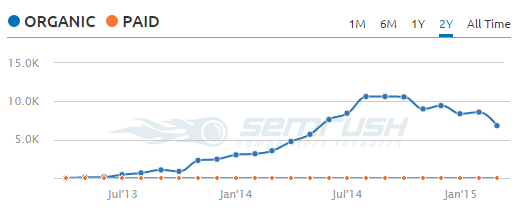 One of the biggest struggles that companies face is finding marketers that stand out from the crowd, particularly with content creation.
One of the biggest struggles that companies face is finding marketers that stand out from the crowd, particularly with content creation.
I saw a forum post not long ago where someone asked what blogs they follow for marketing information. Interestingly enough, most of the people that responded mentioned individuals rather than company blogs.
Isn’t it interesting that when it comes to influence, solo bloggers often outperform well-funded companies? Some businesses even have 6-7 figure marketing budgets dedicated to online marketing.
So how is it that solo bloggers are able to effectively compete against larger businesses for attention? And what can companies do to create more engaging content? Here are a few things to consider.
 Last year, Twitter announced that they were going to shut down the API that allowed users to display Twitter share counts on their website. Before that happened, I decided to scrape social share counts from some of the most well known blogs that used content marketing to successfully grow their businesses.
Last year, Twitter announced that they were going to shut down the API that allowed users to display Twitter share counts on their website. Before that happened, I decided to scrape social share counts from some of the most well known blogs that used content marketing to successfully grow their businesses. Content marketing has been around for a very long time, but has grown sharply in popularity in recent years. Google’s crack down on just about every easy link building tactic and the growth of social media marketing have made content marketing a compelling choice for growing a business.
Content marketing has been around for a very long time, but has grown sharply in popularity in recent years. Google’s crack down on just about every easy link building tactic and the growth of social media marketing have made content marketing a compelling choice for growing a business. One of the biggest challenges for content marketers is coming up with ongoing ideas for content creation. Many businesses that are failing with content marketing are just creating content on the fly without a plan. When developing a content creation strategy, you need to:
One of the biggest challenges for content marketers is coming up with ongoing ideas for content creation. Many businesses that are failing with content marketing are just creating content on the fly without a plan. When developing a content creation strategy, you need to:






